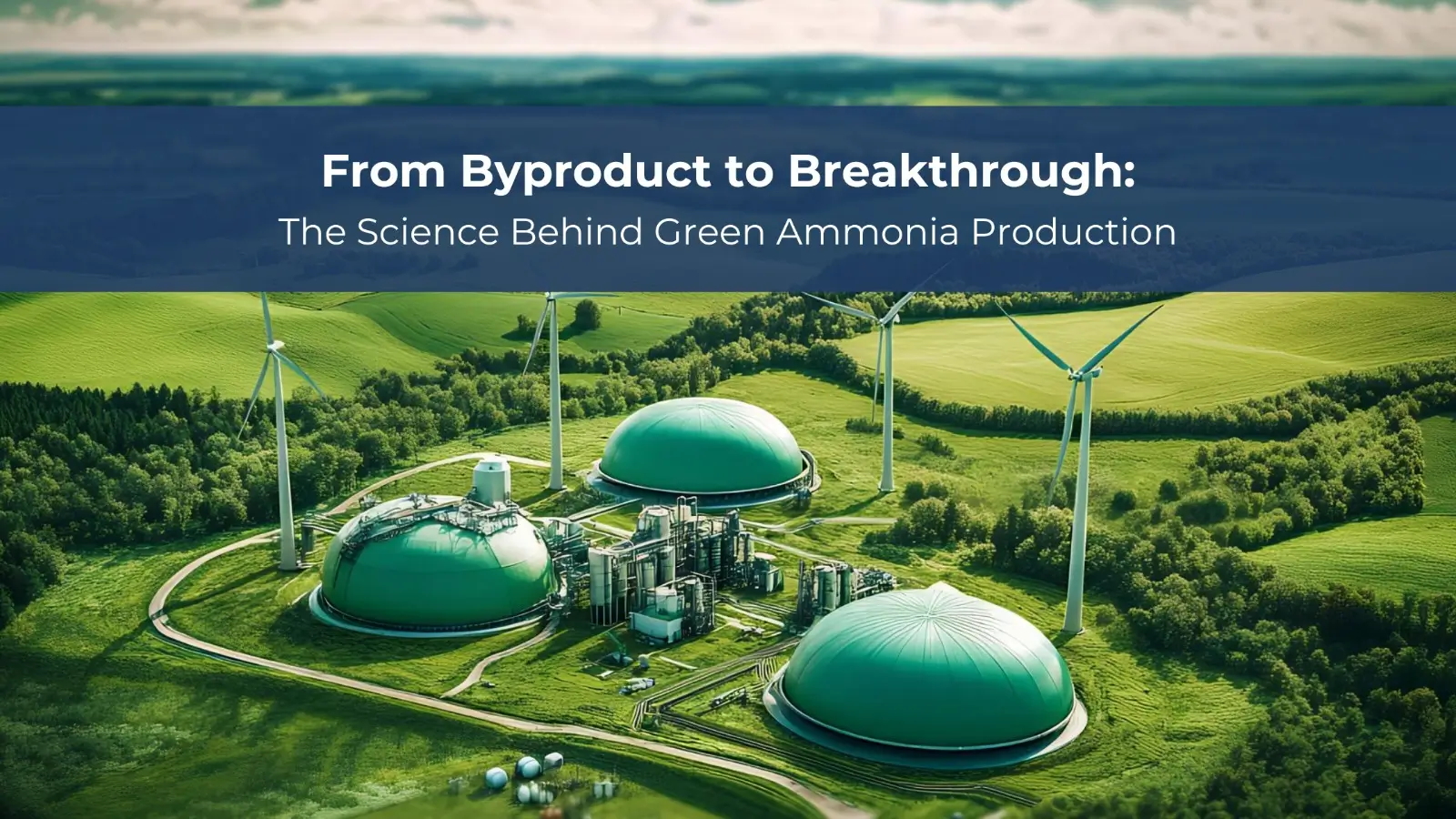Ammonia has long been the backbone of global agriculture and industry — powering fertilizers, refrigeration systems, pharmaceuticals, and chemical manufacturing. But behind this versatile compound lies a challenge: traditional ammonia production is one of the most energy-intensive industrial processes in the world, heavily reliant on fossil fuels.
Today, science is turning that story around. With technological advances and a push toward sustainability, the rise of green ammonia marks one of the most significant transformations in chemical manufacturing — turning a byproduct of carbon-heavy industries into a breakthrough for clean energy and sustainable production.
Learn how we lead in green ammonia.
The Problem with Conventional Ammonia
Conventional ammonia is produced through the Haber-Bosch process, which reacts hydrogen and nitrogen at high temperatures and pressures. While effective, it consumes about 1–2% of the world’s total energy supply and emits nearly 1% of total global CO₂ emissions.
Hydrogen, one of its key feedstocks, is typically derived from natural gas via steam methane reforming — a process that releases large amounts of carbon dioxide. This makes traditional ammonia production both energy-intensive and carbon-heavy.
As industries and governments tighten climate targets, the demand for a cleaner, sustainable ammonia alternative has never been more urgent.
What Is Green Ammonia?
Green ammonia is ammonia produced using renewable energy sources rather than fossil fuels. The “green” label comes from its carbon-free hydrogen source, obtained via water electrolysis — a process powered by renewable electricity such as solar, wind, or hydro.
Instead of generating hydrogen from natural gas, renewable ammonia production splits water (H₂O) into hydrogen and oxygen using electricity from clean sources. The hydrogen is then combined with nitrogen (from air separation) to create ammonia (NH₃), but without releasing carbon emissions.
In simple terms:
Green ammonia = nitrogen (from air) + hydrogen (from water) + renewable electricity.
How the Green Ammonia Process Works
| Parameter | Conventional Ammonia | Green Ammonia |
|---|---|---|
| Hydrogen Source | Natural Gas (Steam Methane Reforming) | Water Electrolysis (Renewable Energy) |
| Energy Source | Fossil Fuels (Coal/Natural Gas) | Solar, Wind, or Hydro Power |
| Carbon Emissions | High – CO₂ released during hydrogen production | Zero – Hydrogen from water, powered by clean energy |
| Environmental Impact | Significant greenhouse gas footprint | Minimal, sustainable, and renewable |
| Industrial Maturity | Highly established and scalable | Emerging, growing with global clean-energy investments |
The major difference lies in the source of hydrogen and energy input. By shifting from fossil-based hydrogen to electrolytic hydrogen, ammonia production becomes cleaner and more sustainable — paving the way for a new generation of low-carbon industries.
Applications Beyond Fertilizers
The promise of green ammonia extends far beyond agriculture. As the world searches for ways to decarbonize hard-to-abate sectors, green ammonia offers solutions in multiple industries:
- Clean Fuel Alternative: Ammonia can be used as a carbon-free energy carrier and even as a marine fuel, offering a cleaner substitute for heavy fuel oil in shipping.
- Hydrogen Storage Medium: Because ammonia can be easily liquefied, it serves as an efficient hydrogen carrier, simplifying long-distance hydrogen transport.
- Power Generation: In gas turbines and fuel cells, ammonia can be co-fired or directly used to generate power with minimal emissions.
- Industrial Decarbonization: Sectors like steel, cement, and chemicals can use renewable ammonia to replace carbon-intensive feedstocks.
Each of these applications brings the world closer to a net-zero future — showing how ammonia’s chemical versatility makes it a key player in global energy transition.
Challenges and the Road Ahead
While the science behind green ammonia is proven, large-scale adoption still faces key challenges:
- High production cost compared to conventional methods.
- Intermittency of renewable energy sources, affecting electrolyser efficiency.
- Infrastructure gaps in transport, storage, and safety regulations.
However, global momentum is building. Pilot plants and industrial-scale projects in India, Australia, Japan, and Europe are already demonstrating the potential of renewable ammonia to reshape global energy systems.
As the costs of renewable power and electrolysis technologies continue to decline, green ammonia will become not just a sustainable option — but an economically viable one.
Jaysons Chemical Industries: Towards a Cleaner Chemical Future
At Jaysons Chemical Industries, sustainability isn’t just a trend — it’s a commitment. With over five decades of expertise in ammonia production and distribution, the company continues to explore innovative ways to integrate sustainable ammonia solutions into its portfolio.
Conclusion
From its beginnings as a byproduct of fossil fuel industries to its future as a breakthrough in clean energy, green ammonia represents a monumental leap in chemical engineering. It redefines how we produce, store, and use energy — proving that with the right science, sustainability and progress can go hand in hand.













